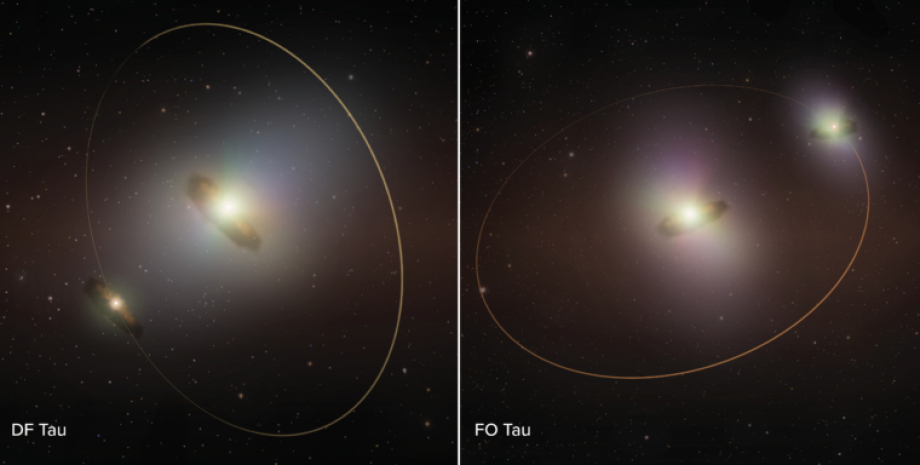
The study of such systems makes it possible to see how the stars interact in the double system and how they can distort protoplanetary disks, UNIVERSE TODAY writes. In focus. Technology has appeared its Telegram channel. Subscribe not to miss the latest and most intrusive news from the world of science! The discovery of planets outside the solar system has changed our view to the universe and how the star systems develop.
The first confirmed exoplanet has been discovered in 1995 and since then more than 5,000 planets have been discovered by astronomers. Among them are both huge gas giants and rocky worlds in size. Astronomers have also actively studied protoplanetary disks, and therefore understanding the formation of planetary systems has improved over the past decades.
For several years, astronomers have been convinced that protoplanetary disks consisting of gas and dust and surrounding young stars are predecessors of planetary systems. The conditions that allow the discs to exist for a long time to form planets remain unclear, and which can lead to their early scattering. Scientists at the US National Radiostronomy Observatory have found protoplanetary disks around young double stars - DF Tau and fo Tau.
In the first system, the star divides 14 astronomical units (the average distance between the Earth and the Sun is one astronomical unit), and in the second system - 22 astronomical units. Astronoma was used to detect these disks, ALMA radio telescope, located in Chile and Telescope of the Keck Observatory (Hawaiian Islands). According to scientists, double stars are not yet in the main sequence, that is, they have not yet become ordinary stars, but are proto -stars.
The revealed protoplanetary disks, according to scientists, provide a great opportunity to study them and try to find answers to the available questions about their evolution. Astronomers have studied the size of the disks, structure and slope relative to the speed of rotation of the stars and the intensity of the magnetic field to try to understand the complex processes that occur in them.
Double star systems, such as DF Tau and fo Tau, are a common phenomenon that makes them a great example to study. DF Tau is a double star system where stars have elongated orbits. Astronomers found that both stars have protoplanetary disks, but one of them is magnetically related to the star, and it still takes away material from the disk for its formation. The internal disk, apparently, largely collapsed and separated from the rapid rotation star.
This involves the connection between the rotation of the star and the early scattering of the disk. The discrepancy between the orbits of the stars and the location of the discs can affect the evolution of the latter. Fo Tau is slightly different, because there are protoplanetary disks leveled with the orbit of stars. In this case, the stars have moderate rotation speeds and, apparently, magnetically blocked with their discs.










All rights reserved IN-Ukraine.info - 2022